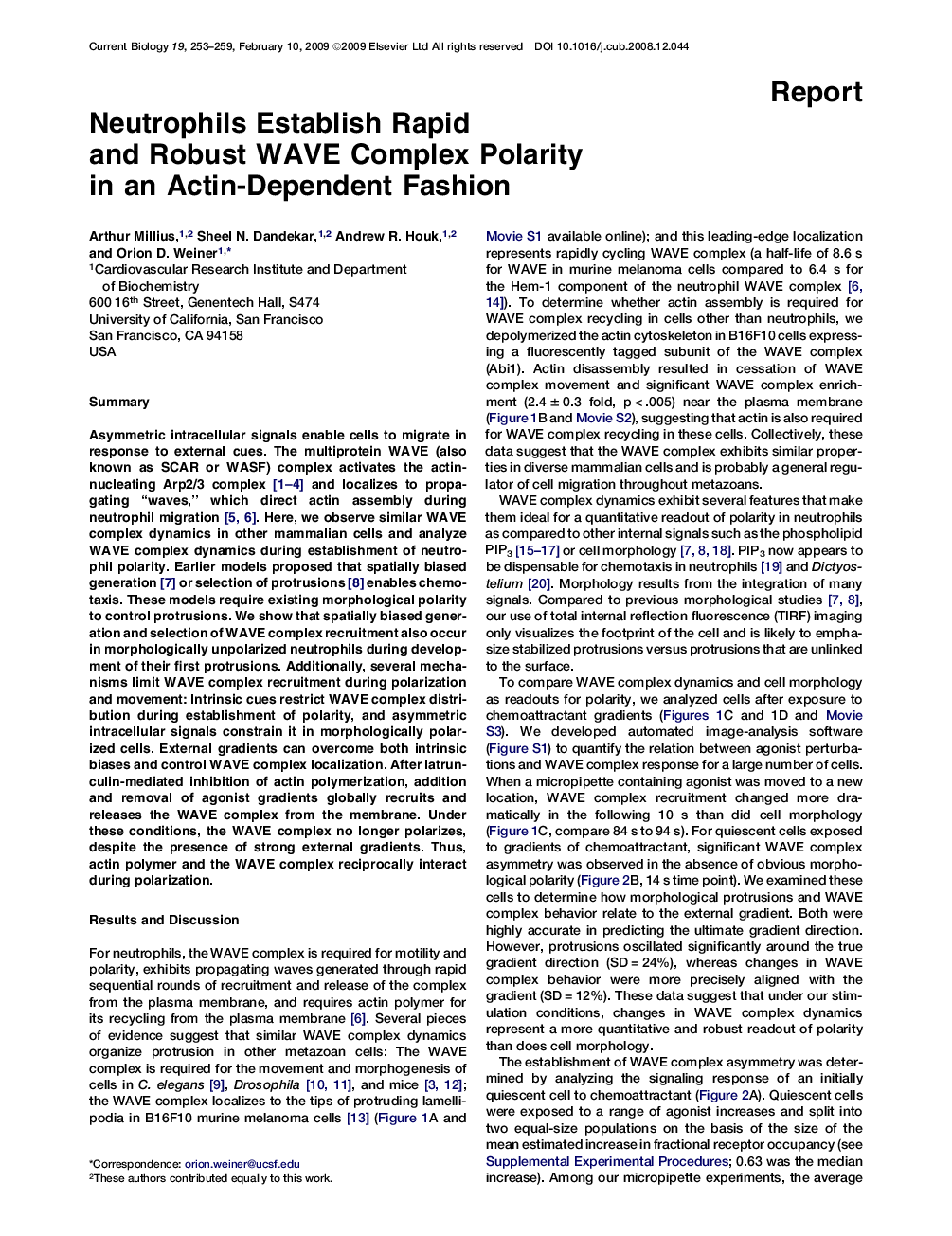| Article ID | Journal | Published Year | Pages | File Type |
|---|---|---|---|---|
| 2043590 | Current Biology | 2009 | 7 Pages |
SummaryAsymmetric intracellular signals enable cells to migrate in response to external cues. The multiprotein WAVE (also known as SCAR or WASF) complex activates the actin-nucleating Arp2/3 complex 1, 2, 3 and 4 and localizes to propagating “waves,” which direct actin assembly during neutrophil migration 5 and 6. Here, we observe similar WAVE complex dynamics in other mammalian cells and analyze WAVE complex dynamics during establishment of neutrophil polarity. Earlier models proposed that spatially biased generation [7] or selection of protrusions [8] enables chemotaxis. These models require existing morphological polarity to control protrusions. We show that spatially biased generation and selection of WAVE complex recruitment also occur in morphologically unpolarized neutrophils during development of their first protrusions. Additionally, several mechanisms limit WAVE complex recruitment during polarization and movement: Intrinsic cues restrict WAVE complex distribution during establishment of polarity, and asymmetric intracellular signals constrain it in morphologically polarized cells. External gradients can overcome both intrinsic biases and control WAVE complex localization. After latrunculin-mediated inhibition of actin polymerization, addition and removal of agonist gradients globally recruits and releases the WAVE complex from the membrane. Under these conditions, the WAVE complex no longer polarizes, despite the presence of strong external gradients. Thus, actin polymer and the WAVE complex reciprocally interact during polarization.
